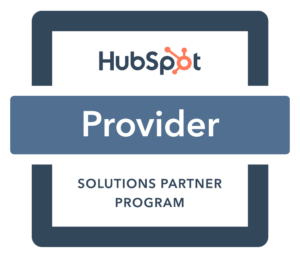Okay, so I’m being a little irreverent with my title today. All the same, it is a truism of human behavior that it’s the people who care the most about us or are vested in us that all too often are our only source of important feedback. The rest just let us walk around with food on our faces and our skirts tucked into our underwear. It’s just easier for most people, to look the other way or find some means to avoid opening up an embarrassing discussion or a potential conflict.
So why is it important to business? Because it’s important to remember that those who engage with us in business – customers, partners, employees – are people after all. And that you can expect the same responses and behaviors that you might see in other more personal relationships you might have with people.
Outside of your circle of long standing customers it can sometimes be really hard to get solid actionable feedback that can help improve our businesses.
Yet, one of the best ways to get quick wins in business is to be able to quickly and proactively respond to constructive feedback before it turns into an escalation that also needs damage repair. It’s also important to not fall into the trap of only listening to the squeaky wheel.
So how do you engage an unengaged customer enough to get them to let you know why you have failed to engage them? It can be a paradox.
Be specific about feedback you want to collect and why
The companies that do this best treat the collection of feedback as designed experiments that are tied to specific business goals. What is important is to find correlation between business actions and the resulting outcomes.
As an example, when using a metric such as social media “sentiment”, it wouldn’t be enough to just track ongoing trends in sentiment. It would be more meaningful to measure changes in the trend as correlated to an activity such as a new feature release or specific marketing campaign. It would be an even fuller statistic, if we also compared the relationship between sentiment and user engagement or sales.
In this way, we are not just trying to figure out what the market thinks of is, we are measuring the market’s response to a business action we have undertaken.
Make it as easy as possible
Sometimes it’s about asking the right question, at the right time and making it easy for people to answer. Rather than trying to engage people in long detailed surveys or time consuming phone interviews.
I believe that’s why metrics such as Net Promoter Score (NPS) work. Even though a data scientist may argue that tracking the response of one specific question, and giving meaning to it, is not often statistically important. For a lot of companies, it’s proven to be a good indicator of individual customer health and predictor of potential growth when health customer health is measured collectively.
To very briefly explain NPS: During a point in the customer fulfilment chain, the customer is asked to rate the likelihood of recommending the company or product to someone else. Based on the result, the customer is rated as a promoter, detractor or passive.
A company tracking NPS scores can act on trends in overall customer satisfaction. The best companies, design experiments around specific business goals, when they ask for the feedback
Find ways to listen passively
Though these are great tools and metrics, it still doesn’t capture the sense of satisfaction (or dissatisfaction), from the customers that pass on the survey or don’t bother to tweet or share our campaigns.
Most SaaS products and some licenced applications track user actions and perform an analysis of how users are responding to a product. And possibly also introduce some A/B testing when it comes to changes.
Again, it’s important to understand the context of the usage. As a simple example, I wouldn’t consider a feature related to setting up holiday away time from a calendar in my product as not important if people only use it once a year. I might if only 1% of users set their holiday time.
Listening to what users do can also flag users that are on the cusp of leaving, so that you can take some preventative measures to keep them. For example, if an inactive user logs on after some time and immediately starts downloading or backing up their data, then that is likely a strong indication they may be preparing to leave. You may want to then plan some preventative measures or reach out if there are any issues you could resolve.
Finally,
The important thing is to be open to gathering feedback. To be always looking for ways to draw a picture of how your customer is responding and engaging with you. It’s important to get a picture that represents the full spectrum of all your customers, not just a select group. And most importantly, look for ways to tie this to specific business goals or measure the impact of our actions in order to get the best insights.
